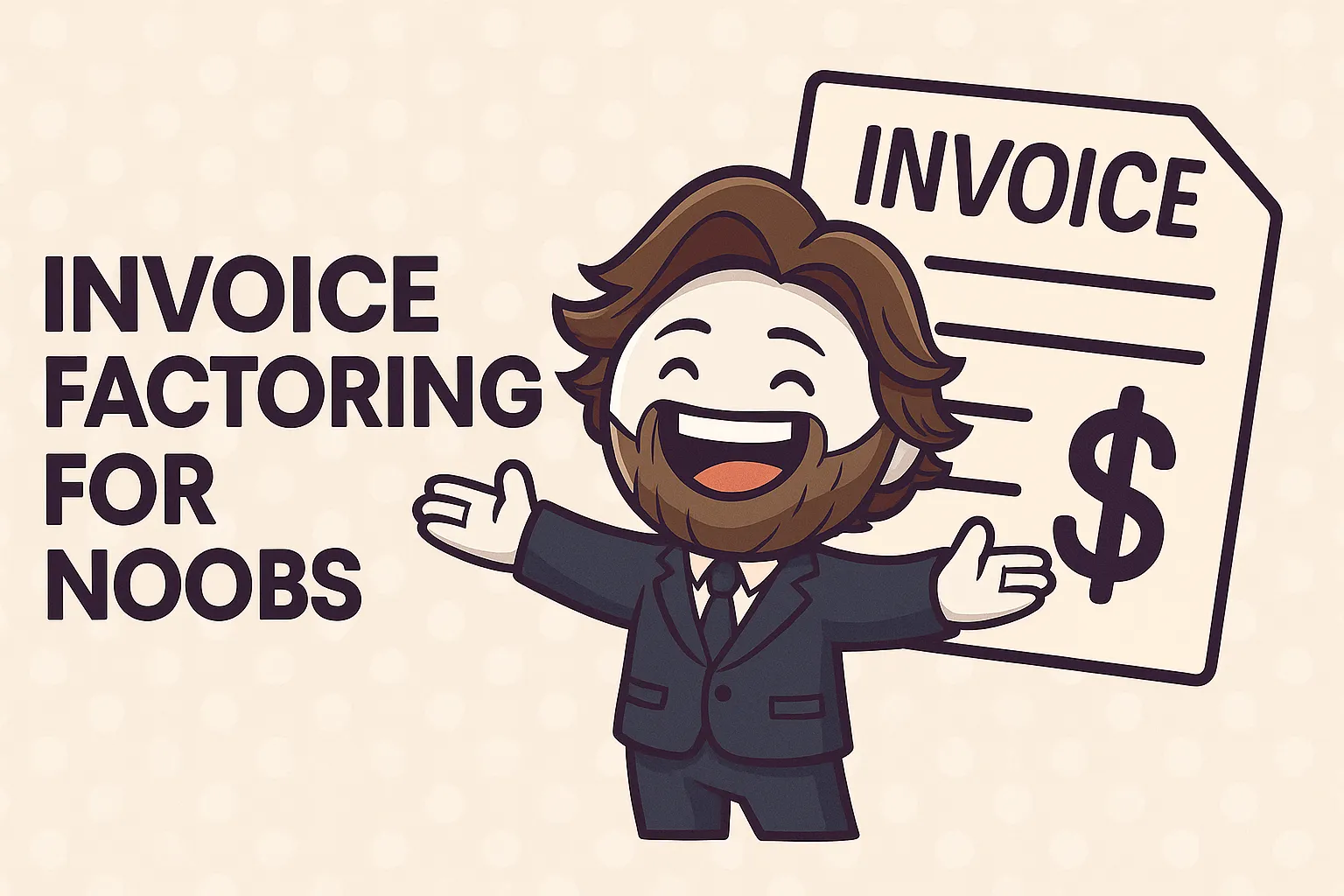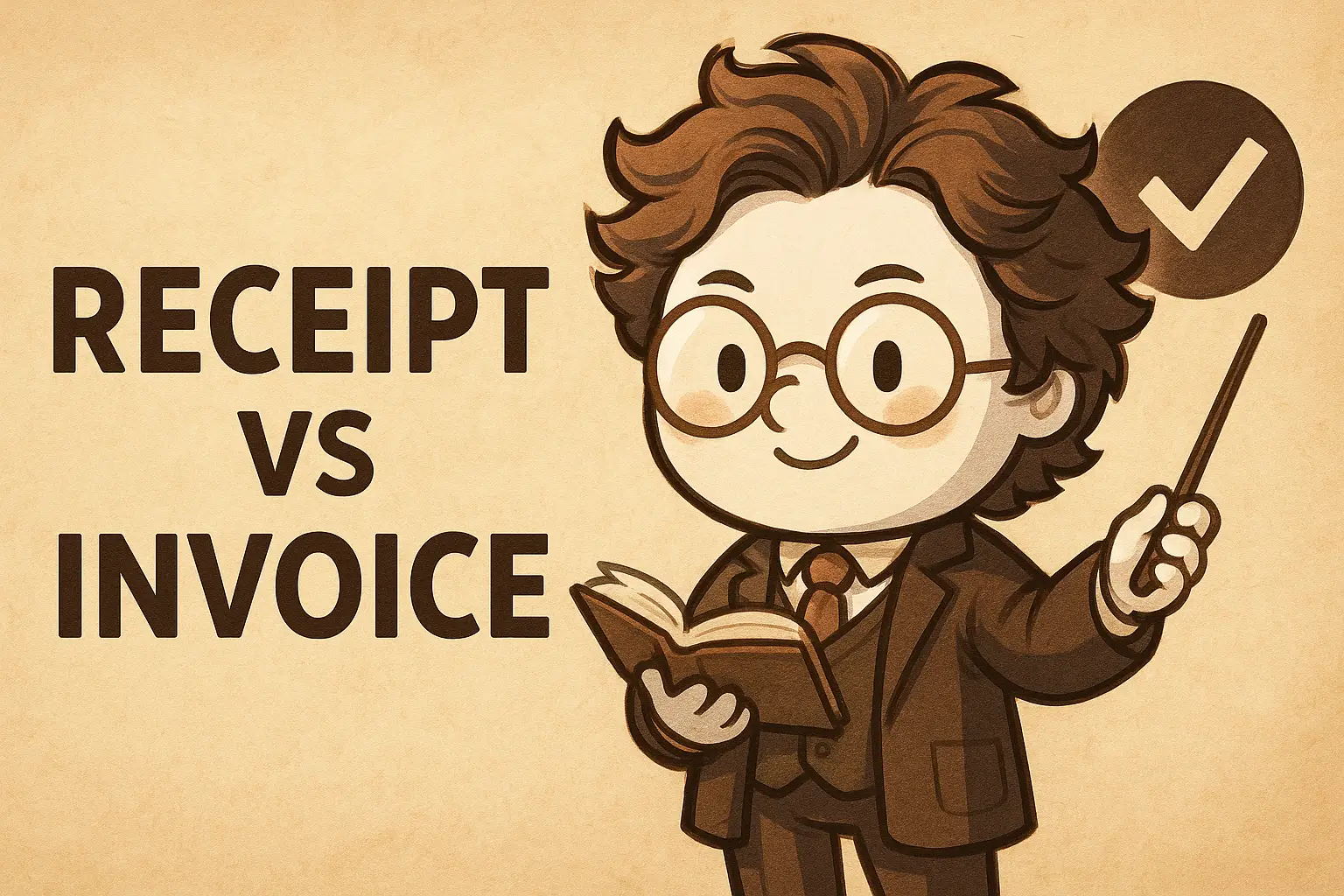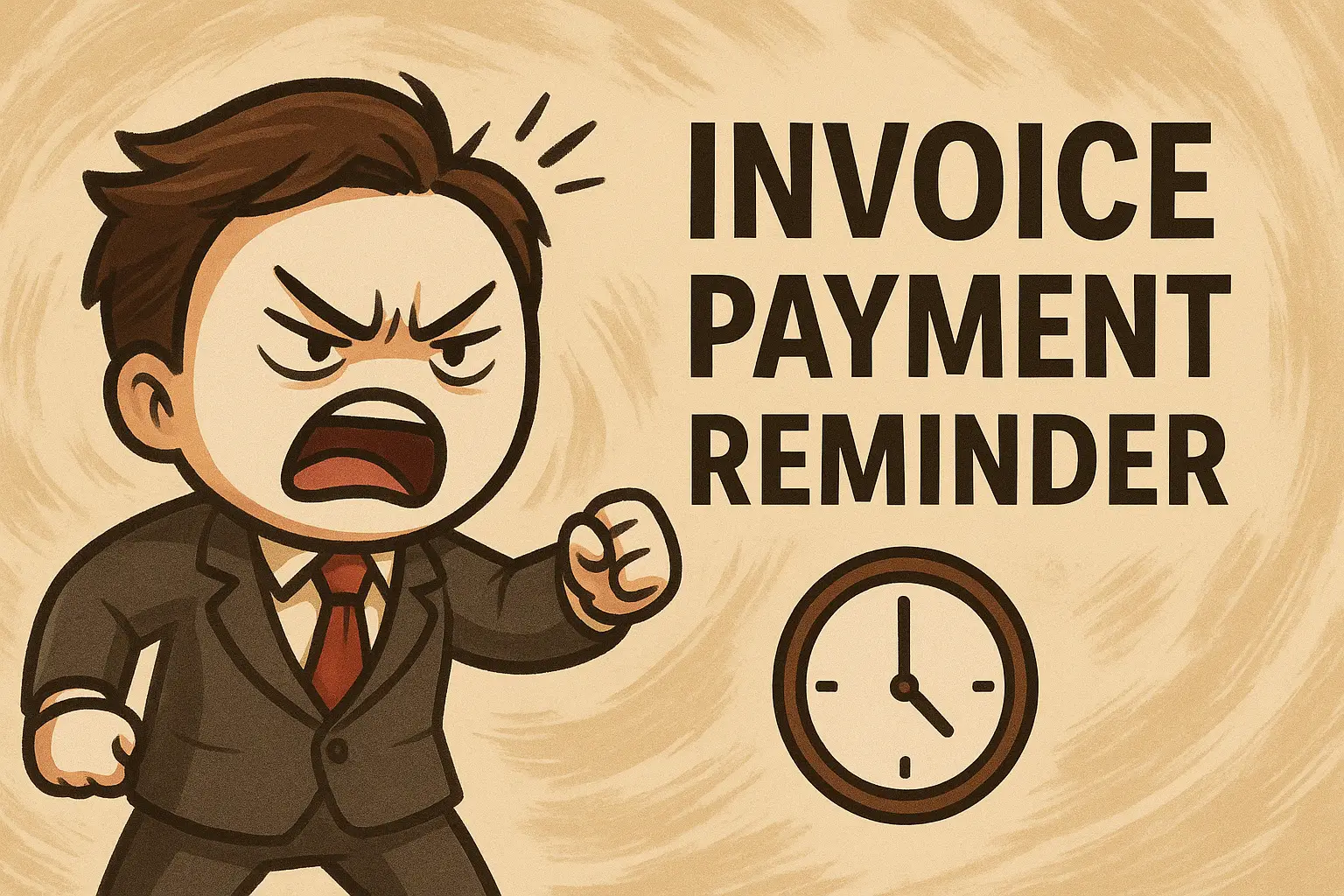Running a business means dealing with cash flow challenges, especially when clients take 30, 60, or even 90 days to pay their invoices. While you're waiting for payments, you still need to pay employees, rent, suppliers, and other expenses. This cash flow gap can cripple growing businesses and prevent you from taking on new opportunities.
Enter invoice factoring—a financial solution that turns your unpaid invoices into immediate cash. If you've never heard of invoice factoring or find it confusing, this beginner-friendly guide will explain everything you need to know in simple terms.
What is Invoice Factoring? (The Simple Explanation)
Think of invoice factoring as selling your unpaid bills for cash today instead of waiting months to get paid. Invoice factoring is a financing strategy where a company sells its unpaid invoices to a third-party lending institution for a cash advance.
Here's how it works in everyday terms: Let's say you completed a $10,000 project for a client, but they won't pay for 60 days. Instead of waiting, you can sell that invoice to a factoring company for about $8,500 in cash within 24-48 hours. The factoring company then collects the full $10,000 from your client when it's due.
Because it's a sale, not a loan, it doesn't impact your credit like traditional bank financing. This makes it accessible to businesses that might not qualify for traditional loans.
How Invoice Factoring Works: Step-by-Step Process
Understanding the factoring process helps you know what to expect and how to prepare. The process is actually quite straightforward.
Step 1: You Complete Work and Send an Invoice
This is business as usual—you provide products or services to your clients and send professional invoices with your standard payment terms (typically 30-90 days).
Step 2: Submit Invoices to the Factoring Company
Instead of waiting for payment, you submit your unpaid invoices to a factoring company. They'll verify the work was completed and your client is creditworthy.
Step 3: Receive Immediate Cash (The Advance)
The firm pays an advance (a partial payment) as soon as you issue an invoice. This advance typically ranges from 70-90% of the invoice value, depending on your industry and client creditworthiness.
Step 4: Your Client Pays the Factoring Company
When the invoice comes due, your client pays the factoring company directly instead of paying you. The factoring company handles all collection efforts.
Step 5: Receive the Remaining Balance
Factoring company sends you the remainder of the invoice amount, minus fees. You receive the remaining 10-30% of the invoice value, minus the factoring fees.
Types of Invoice Factoring: Understanding Your Options
Not all factoring arrangements are the same. Understanding the different types helps you choose the best option for your business needs.
Recourse vs. Non-Recourse Factoring
Recourse Factoring: If your client doesn't pay, you're responsible for buying back the invoice or replacing it with another one. This option typically offers lower fees because you bear the credit risk.
Non-Recourse Factoring: The factoring company absorbs the loss if your client doesn't pay due to bankruptcy or insolvency. This protection comes with higher fees but provides peace of mind.
Notification vs. Non-Notification Factoring
Notification Factoring: Your clients are informed that you've sold your invoices to a factoring company, and they pay the factor directly. This is the most common and least expensive option.
Non-Notification Factoring: Your clients continue paying you directly, and you forward payments to the factoring company. This maintains your client relationships but costs more and requires more administration.
Spot Factoring vs. Contract Factoring
Spot Factoring: You can factor individual invoices as needed without long-term commitments. This offers maximum flexibility but typically comes with higher rates.
Contract Factoring: You commit to factoring a certain volume of invoices over a specific period. This usually provides better rates and terms but requires ongoing commitment.
Invoice Factoring Costs: What You'll Actually Pay
Understanding factoring costs is crucial for determining if this financing option makes sense for your business. The costs can vary significantly based on multiple factors.
Factoring Rates and Fees
Factoring rates typically range from 1% to 5% of the invoice value per month, but the actual cost depends on several variables:
Primary Factoring Fee: The main factoring fee is called the transaction fee or discount rate. This is the core cost of factoring and represents the factor's profit margin.
Additional Fees: Many factoring companies charge extra fees including:
- Application or setup fees
- Monthly minimum fees
- Credit check fees
- Wire transfer fees
- Early termination fees
Factors That Affect Your Rate
Client Creditworthiness: Invoices from large, established companies with excellent credit get better rates than those from small or risky clients.
Invoice Size: Larger invoices often qualify for better rates because they're more profitable for factoring companies.
Your Sales Volume: Higher monthly factoring volumes typically earn volume discounts.
Industry Risk: Some industries are considered riskier than others, affecting your factoring rates.
Payment Terms: Invoices due in 30 days get better rates than those due in 90 days.
Calculating True Factoring Costs
Let's use a real example to show how factoring costs work:
Scenario: $10,000 invoice with 30-day payment terms
- Factoring rate: 3% per month
- Advance rate: 80%
Day 1: You receive $8,000 (80% advance) Factoring fee: $300 (3% of $10,000) Day 30: You receive $1,700 ($10,000 - $8,000 - $300)
Total cost: $300 for accessing $8,000 immediately instead of waiting 30 days.
Who Should Consider Invoice Factoring?
Invoice factoring isn't right for every business, but it can be a lifesaver for companies in specific situations.
Ideal Candidates for Invoice Factoring
B2B Companies with Net Terms: Invoice factoring can be a good option for business-to-business companies that need fast access to cash tied up in receivables.
Growing Businesses: Companies experiencing rapid growth often struggle with cash flow as their receivables grow faster than their available capital.
Seasonal Businesses: Companies with seasonal fluctuations can use factoring to smooth out cash flow during slow periods.
New Businesses: Startups without credit history or established banking relationships often find factoring more accessible than traditional loans.
Government Contractors: Businesses working with government agencies, which often have slow payment processes, benefit significantly from factoring.
Industries That Commonly Use Factoring
- Transportation and logistics companies
- Staffing and recruitment agencies
- Manufacturing and distribution
- Construction and contractor services
- Healthcare providers
- Professional services (consulting, marketing, etc.)
When Factoring Might Not Be Right
High-Margin Businesses: If your profit margins are thin, factoring costs might eliminate most of your profits.
Consumer-Focused Businesses: Factoring works best with B2B invoices; consumer receivables are harder to factor.
Businesses with Payment Issues: If you frequently have disputes or collection problems, factoring companies may not want to work with you.
Benefits of Invoice Factoring
Understanding the advantages helps you determine if factoring aligns with your business goals.
Immediate Cash Flow Improvement
The primary benefit is converting slow-paying receivables into immediate cash. This improved cash flow allows you to:
- Pay employees and suppliers on time
- Take advantage of early payment discounts
- Invest in growth opportunities
- Handle unexpected expenses
No Debt Creation
Because it's a sale, not a loan, it doesn't impact your credit like traditional bank financing. Factoring doesn't appear as debt on your balance sheet, which preserves your borrowing capacity for other needs.
Professional Collections
Factoring companies are professional collectors with systems and expertise you might not have. They handle all collection efforts, freeing up your time to focus on running your business.
Credit Protection
With non-recourse factoring, you're protected against client bankruptcy or insolvency, reducing your financial risk.
Scalable Financing
As your sales grow, your available factoring capacity grows automatically. You don't need to reapply or renegotiate credit limits constantly.
Potential Drawbacks and Risks
Like any financial tool, invoice factoring has potential downsides you should understand before committing.
Cost Considerations
Factoring is generally more expensive than traditional bank financing. Typically, the factoring rates range from 1% to 5% of the invoice value, which can add up quickly over time.
Client Relationship Impact
With notification factoring, your clients know you're using a factor, which might affect how they perceive your business's financial stability.
Loss of Control
Once you factor an invoice, the factoring company controls the collection process. If they're aggressive or unprofessional, it could damage client relationships.
Contract Obligations
Many factoring agreements include minimum volume requirements or long-term contracts that can be difficult to exit.
Customer Credit Dependency
Your factoring availability and rates depend on your customers' creditworthiness, not just your own business performance.
How to Choose the Right Factoring Company
Selecting the right factoring partner is crucial for a positive experience. Not all factoring companies are created equal.
Key Factors to Evaluate
Advance Rates: Look for companies offering 80-90% advance rates on approved invoices.
Factoring Fees: Compare not just the advertised rates but all fees including setup, monthly minimums, and additional charges.
Industry Experience: Choose factors with experience in your specific industry who understand your business challenges.
Customer Service: You'll interact with your factor regularly, so responsive, helpful service is essential.
Technology Platform: Modern factors offer online portals for submitting invoices, tracking payments, and accessing reports.
Funding Speed: Understand how quickly you'll receive funds after submitting invoices.
Questions to Ask Potential Factors
- What is your advance rate for my industry?
- What are all the fees I'll pay (not just the factoring rate)?
- How quickly will I receive funds?
- What happens if my client disputes an invoice?
- Can I factor invoices selectively, or must I factor all receivables?
- What are the contract terms and exit requirements?
- Do you offer non-recourse protection?
Red Flags to Avoid
Extremely Low Advertised Rates: Posted rates like "starting from 1.95%" may be attractive, but they don't provide enough information to make an informed decision. These teaser rates often don't reflect true costs.
High-Pressure Sales Tactics: Reputable factors will give you time to review terms and ask questions.
Unclear Fee Structures: If a factor can't clearly explain all costs upfront, look elsewhere.
Poor Online Reviews: Research the company's reputation through online reviews and industry forums.
Lack of Industry Experience: Factors without experience in your industry may not understand your specific needs.
Getting Started with Invoice Factoring
If you've decided factoring might be right for your business, here's how to begin the process.
Preparing Your Application
Financial Documents: Gather recent financial statements, tax returns, and accounts receivable aging reports.
Client Information: Prepare details about your major customers, including their payment history and creditworthiness.
Sample Invoices: Provide examples of your invoices to demonstrate your billing processes and terms.
Business Information: Have your business license, insurance certificates, and other relevant documents ready.
The Application Process
Initial Consultation: Most factors offer free consultations to assess your needs and explain their services.
Application Submission: Complete the formal application with all required documentation.
Credit Checks: The factor will check both your business credit and your customers' credit.
Contract Negotiation: Review and negotiate the factoring agreement terms.
Setup: Once approved, you'll set up your account and begin submitting invoices.
Setting Expectations
Timeline: The entire process typically takes 1-2 weeks from application to first funding.
Documentation: Be prepared to provide additional information or clarification during underwriting.
Client Notification: If using notification factoring, plan how to inform your clients about the arrangement.
Best Practices for Successful Factoring
Maximizing the benefits of invoice factoring requires following proven best practices.
Invoice Management
Professional Invoices: Ensure your invoices are clear, detailed, and professional-looking. Poor invoice quality can delay funding or reduce advance rates.
Prompt Submission: Submit invoices to your factor as soon as you send them to clients to maximize cash flow benefits.
Accurate Information: Double-check all invoice details before submission to avoid processing delays.
Client Communication
Transparent Communication: If using notification factoring, explain the arrangement to clients professionally and positively.
Maintain Relationships: Continue nurturing client relationships even though they're paying the factor.
Address Concerns: Be prepared to answer client questions about the factoring arrangement.
Financial Management
Cash Flow Planning: Use the improved cash flow strategically to grow your business rather than just covering current expenses.
Cost Monitoring: Track factoring costs as a percentage of revenue to ensure the arrangement remains profitable.
Performance Metrics: Monitor key metrics like days sales outstanding and customer payment patterns.
Alternatives to Invoice Factoring
Before committing to factoring, consider other financing options that might better suit your needs.
Traditional Bank Financing
Lines of Credit: Revolving credit lines offer flexibility and typically lower costs than factoring, but require strong credit and collateral.
Term Loans: Fixed-rate loans provide predictable payments but require qualification and create debt obligations.
Alternative Financing
Merchant Cash Advances: Quick funding based on future credit card sales, but typically very expensive.
Online Lenders: Faster approval than traditional banks but often with higher rates than bank financing.
Asset-Based Lending: Uses accounts receivable and inventory as collateral for traditional loans.
Invoice-Based Solutions
Invoice Discounting: Similar to factoring but you maintain control of collections and client relationships.
Supply Chain Financing: Programs where your large customers pay invoices early in exchange for discounts.
Digital Payment Solutions: Platforms that encourage faster customer payments through improved invoicing and payment processing.
Tax and Accounting Considerations
Understanding the financial reporting implications of factoring helps you plan and comply with requirements.
Accounting Treatment
Sale vs. Loan: Since factoring is a sale of assets rather than a loan, it doesn't create debt on your balance sheet.
Revenue Recognition: The timing of revenue recognition doesn't change—you still recognize revenue when you complete work.
Factoring Fees: Treat factoring fees as a cost of financing, similar to interest expense.
Tax Implications
Deductible Expenses: Factoring fees are generally deductible as business expenses.
Timing Differences: You'll receive cash immediately but may have timing differences between when you receive money and when you pay taxes on the income.
Professional Advice: Consult with your accountant about the specific tax implications for your situation.
Real-World Factoring Scenarios
Understanding how factoring works in practice helps you envision how it might benefit your business.
Scenario 1: Growing Manufacturing Company
ABC Manufacturing landed a $50,000 contract with a major retailer, but the client pays in 60 days. ABC needs cash to purchase raw materials for the order.
Solution: ABC factors the invoice at a 3% rate with an 85% advance.
- Immediate cash: $42,500
- Factoring fee: $1,500
- Final payment: $6,000 (when client pays)
- Total cost: $1,500 to access funds 60 days early
Scenario 2: Seasonal Construction Company
XYZ Construction experiences cash flow problems during winter months when construction projects slow down, but they have outstanding invoices from fall projects.
Solution: XYZ uses spot factoring to convert specific invoices to cash during slow periods, maintaining operations without long-term commitments.
Scenario 3: Staffing Agency Growth
Quick Staffing wants to expand but needs cash to make payroll for new contracts before receiving payments from clients.
Solution: Quick Staffing sets up ongoing factoring to ensure consistent cash flow for payroll, enabling them to take on larger contracts and grow faster.
The Future of Invoice Factoring
Understanding industry trends helps you make informed decisions about using factoring services.
Technology Integration
Modern factoring companies increasingly offer digital platforms with features like:
- Online invoice submission and tracking
- Real-time funding status updates
- Integration with accounting software
- Mobile apps for on-the-go management
Fintech Innovation
Invoice factoring aligns with these trends by offering a flexible, tech-enabled solution for cash flow management. New fintech companies are entering the market with innovative approaches and competitive rates.
Market Growth
Rising interest rates make traditional financing options less appealing. Invoice factoring provides a cost-effective alternative for businesses seeking working capital.
Making the Decision: Is Factoring Right for You?
After reading this guide, you should have a clear understanding of whether invoice factoring makes sense for your business.
When to Say Yes
Consider factoring if you:
- Have consistent B2B sales with net payment terms
- Experience cash flow gaps that limit growth or operations
- Have creditworthy customers who pay reliably
- Need funding quickly without lengthy approval processes
- Want to outsource collections and reduce administrative burden
When to Look Elsewhere
Factoring might not be right if you:
- Have thin profit margins that can't absorb factoring costs
- Primarily serve consumer customers rather than businesses
- Have excellent credit and can access cheaper traditional financing
- Experience frequent invoice disputes or collection problems
- Prefer maintaining complete control over customer relationships
Taking the Next Step
If factoring seems like a good fit:
- Research Options: Compare multiple factoring companies to find the best terms
- Calculate Costs: Model the true cost of factoring for your specific situation
- Prepare Documentation: Gather all necessary financial and business documents
- Start Small: Consider spot factoring to test the arrangement before committing long-term
- Monitor Results: Track the impact on cash flow and adjust your strategy as needed
TL;DR
Invoice factoring isn't just emergency financing—it's a strategic tool that can accelerate business growth and improve operations. When used correctly, factoring transforms slow-paying receivables into immediate cash that fuels expansion, smooths seasonal fluctuations, and provides financial flexibility.
The key to successful factoring is understanding your costs, choosing the right partner, and using the improved cash flow strategically. While factoring costs more than traditional bank financing, it offers speed, accessibility, and convenience that can be worth the premium for many businesses.
Remember that factoring is just one tool in your financial toolkit. As your business grows and your financing needs evolve, you might transition to other funding sources or use factoring selectively for specific situations.
Whether you're a complete beginner or exploring factoring for the first time, this guide provides the foundation you need to make an informed decision. Take time to evaluate your specific situation, research potential partners, and consider how factoring fits into your broader business strategy.
The businesses that succeed with factoring are those that view it as an investment in growth rather than just a solution to cash flow problems. With the right approach and partner, invoice factoring can be the catalyst that takes your business to the next level.


